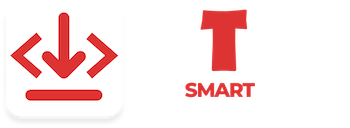WSL 2, Docker, Kali Linux and Windows Terminal – get started
Leverage the power of the Windows Subsystem for Linux (WSL 2), Docker, Kali Linux and Windows Terminal on Win10
What you’ll learn
WSL 2, Docker, Kali Linux and Windows Terminal – get started
- Learn how to set up and use Windows Subsystem for Linux 2 (WSL2)
- Learn how to run Docker Containers on Windows 10 using WSL 2
- Use the new Windows Terminal to be more productive
- Learn Linux easily and quickly by running a lightweight Linux virtual machine on your Windows 10 computer
- Customize the Windows Terminal so you can SSH or Telnet to Servers or Network Devices
- Learn how to easily spin up Docker containers on your Windows laptop or computer
- Learn how to run Kali Linux using WSL 2 on Windows
Requirements
-
Windows 10 computer or laptop
-
Windows 10 version 2004 or later
-
Experience in Windows and Linux is helpful, but not required
Description
Get started quickly with
Windows Subsystem for Linux (WSL2) today!
Learn how to
spin up Docker containers
on your computer and use the fantastic new
Windows Terminal
. I have also added a
Kali Linux video
to show you how to get Kali working with WSL 2.
Microsoft now ships Windows 10 with a Linux Kernel! Amazing to see how Microsoft has changed in recent years. No longer do they hate Linux, but they have now embraced it. You can learn Linux, Docker, and other technologies easily using WSL 2.
WARNING: There are still issues running WSL 2 with VMware Workstation and VirtualBox. Don’t use WSL 2 if you needed nested virtualization with those hypervisors. Hopefully, this will be resolved soon.
This course focuses on the following:
– WSL 2
– Docker using WSL 2
– Windows Terminal
– Visual Studio Code (Vs code)
– Kali Linux installation
I don’t try to teach you everything about Linux, Docker, or Windows. I’m only showing you how you can leverage these technologies to do amazing things. This course consists of practical demonstrations which you can follow – the best way to learn is hands-on learning, so follow me and set this up yourself.
Who this course is for:
- Web developers
- NetDevOps engineers
- Sysadmins
- Network Engineers
- Ethical Hackers
If the links does not work, contact us we will fix them












Add Comment